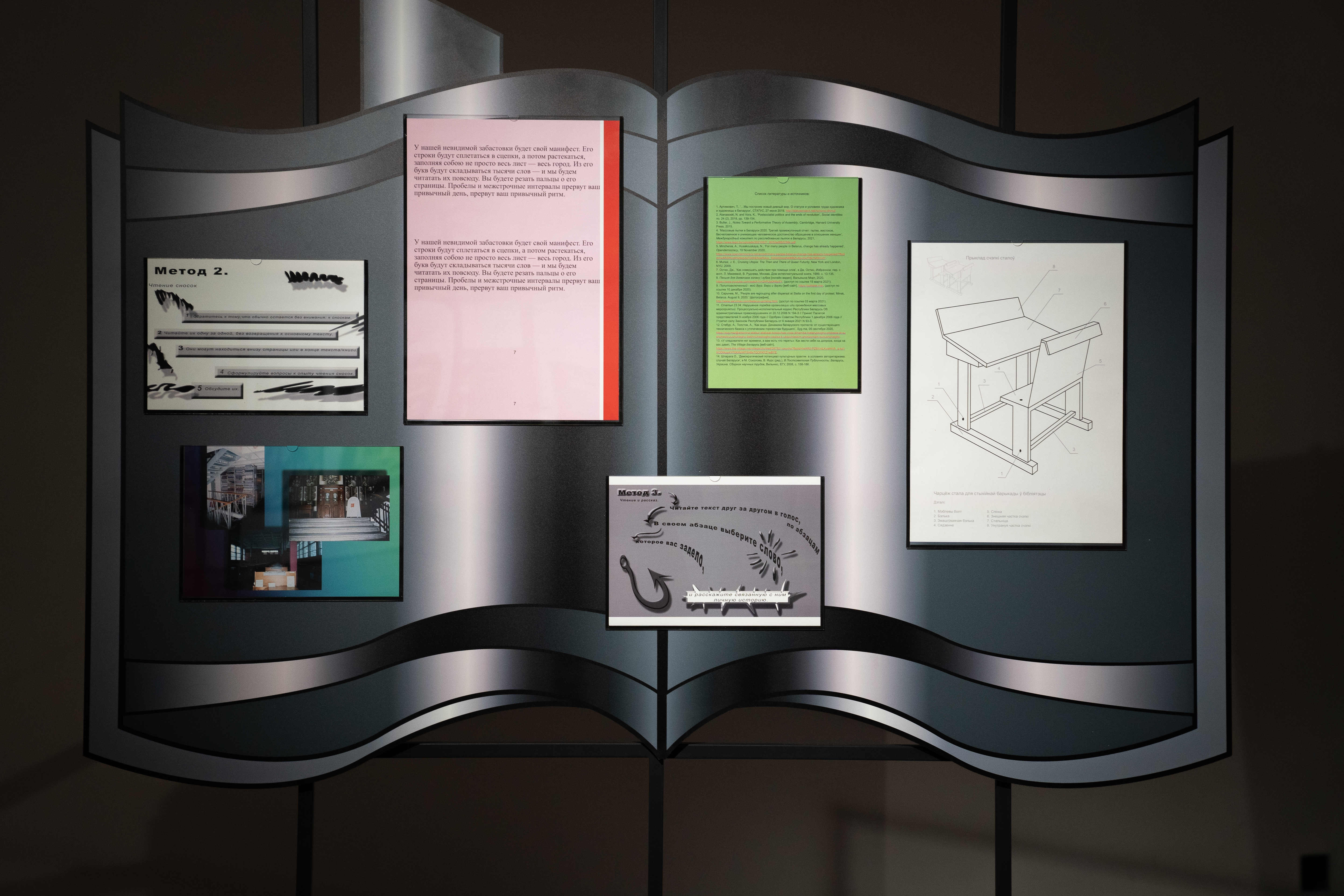Exhibition: Every Day.Art.Solidarity.Resistance
DOC 234—34/2

Curators: Aleksei Borisionok, Andrei Dureika, Marina Naprushkina, Sergey Shabohin, Antonina Stebur, Maxim Tyminko
Photo: Oleksandr Popenko
Photo: Oleksandr Popenko
Information Boards
Problem Collective — an artistic and research collective from Minsk — juxtaposes strikes in the historical perspective with the modern day strikes in Belarus. Many factories, universities, cultural institutions and companies are striking against police and state violence. Not reported by the official media, the strike manifests through low quality images, public statements, insider reports, employees’ dismissals and arrests, chants and banners. The visual form chosen by the collective is an information board or stand — a popular tool used in schools, libraries and factories to disseminate information.
Every stand is dedicated to a specific theme related to the possibilities and political potential of a strike. “Information Board 1” makes reference to the relationship
between the movement of workers, extraction of natural resources and the notion of “the commons.” “Information Board 2” reflects on a strike in a library — by both librarians, the lowest paid job in the country, readers and possibly even the books themselves. “Information Board 3” emphasizes the importance of a feminist strike and invisible care work. During a recent visit to the National Library of Belarus, one of the Collective’s members asked one of the workers if they had been on strike, and she replied, “Oh, even if we were striking, nobody would have probably noticed.” Problem Collective searches for visual imagery — abstract and concrete, figurative and realistic — of several important historical strikes and compares them with the strikes of 2020 and 2021.
Problem Collective — an artistic and research collective from Minsk — juxtaposes strikes in the historical perspective with the modern day strikes in Belarus. Many factories, universities, cultural institutions and companies are striking against police and state violence. Not reported by the official media, the strike manifests through low quality images, public statements, insider reports, employees’ dismissals and arrests, chants and banners. The visual form chosen by the collective is an information board or stand — a popular tool used in schools, libraries and factories to disseminate information.
Every stand is dedicated to a specific theme related to the possibilities and political potential of a strike. “Information Board 1” makes reference to the relationship
between the movement of workers, extraction of natural resources and the notion of “the commons.” “Information Board 2” reflects on a strike in a library — by both librarians, the lowest paid job in the country, readers and possibly even the books themselves. “Information Board 3” emphasizes the importance of a feminist strike and invisible care work. During a recent visit to the National Library of Belarus, one of the Collective’s members asked one of the workers if they had been on strike, and she replied, “Oh, even if we were striking, nobody would have probably noticed.” Problem Collective searches for visual imagery — abstract and concrete, figurative and realistic — of several important historical strikes and compares them with the strikes of 2020 and 2021.




